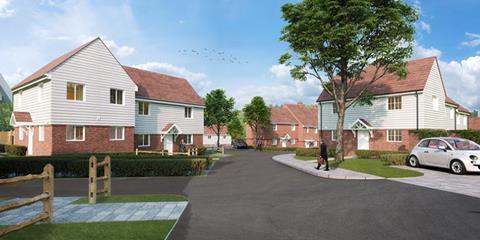Government plans to exempt sites up to 50 homes from making contributions prior to scrapping the system entirely
Government plans to raise the size threshold at which housing sites are required to pay Section 106 contributions could reduce the delivery of affordable housing under the system by up to a fifth.

The government yesterday laid out plans to abolish the existing system of developer contributions in its landmark Planning White Paper.
However, alongside the white paper, the government also published for consultation a number of immediate reforms it wants to enact to the current system. These include plans to lift the threshold for a housing site being liable for Section 106 payments from 10 units to either 40 or 50, which would exempt many thousands of housing schemes from developer contributions.
Section 106 (s106) is the system by which councils extract contributions from developers via the planning system to pay for local infrastructure and affordable housing that mitigates the impact of the scheme on existing residents of an area.
The consultation paper said that the government was proposing to remove developers of sites of less than 40 or 50 homes from their s106 obligations “to stimulate economic recovery with a particular focus on SMEs, […] as smaller sites are more likely to be built out by SMEs”.
>> Ten things you need to know about the Planning White Paper
>> Planning reform: the devil will be in the detail
It said that lifting the threshold to 40 homes would reduce the level of affordable housing delivery via s106 by between 7%-14%, while raising it to 50 would reduce delivery by 10%-20%.
The s106 system last year delivered 28,000 affordable homes, which is around half the total, according to the National Housing Federation (NHF), meaning this change could hit affordable housing delivery by more than 5,000 homes a year.
The consultation paper justified the shift by stating: “However, we anticipate that raising the threshold would make more sites viable for SME developers and would increase the pace of their delivery as the need for negotiation would be removed.
“On balance, the proposed approach would allow more small sites to come forward and help minimise the economic pressure that SMEs are under.”
The news comes amidst growing concern over the impact of the government’s wider reforms to developer contributions on the delivery of affordable housing, given the huge role s106 plays in producing new affordable homes. The government is proposing replacing s106 and the Community Infrastructure Levy in the long term with a new flat-rate Infrastructure Levy taxed on the value of development.
Victoria Hills, chief executive of the Royal Town Planning Institute, said a single new levy could result in less money for affordable housing, sustainable transport and other critical infrastructure, while Kate Henderson, chief executive of the NHF, said: “Any alternative to section 106 must ensure we can deliver more high quality affordable homes to meet the huge demand across the country.”
The consultation on reforms to the existing system also set out the government’s approach to its First Homes policy, under which it is looking to see homes built for first time buyers and key workers at 30% below normal market rates.
The consultation confirmed that in the interim, First Homes will be delivered through the s106 process, and proposed that 25% of all local authority affordable housing requirements be for First Homes. This could replace existing affordable homes ownership products delivered under s106, where 25% or more of the existing requirement for affordable housing was for affordable home ownership.











No comments yet